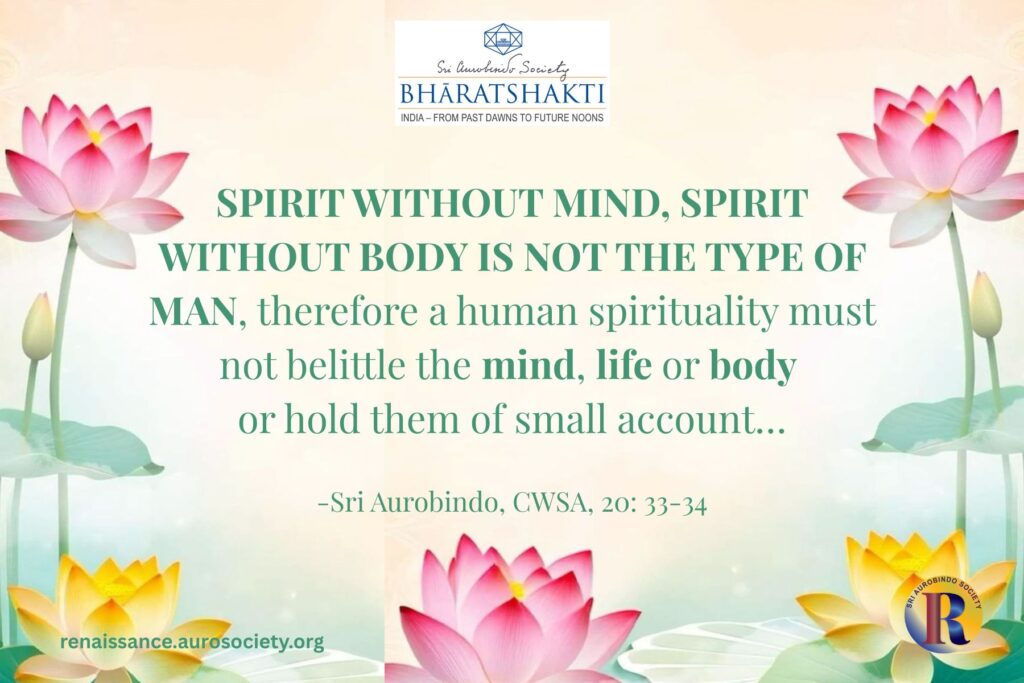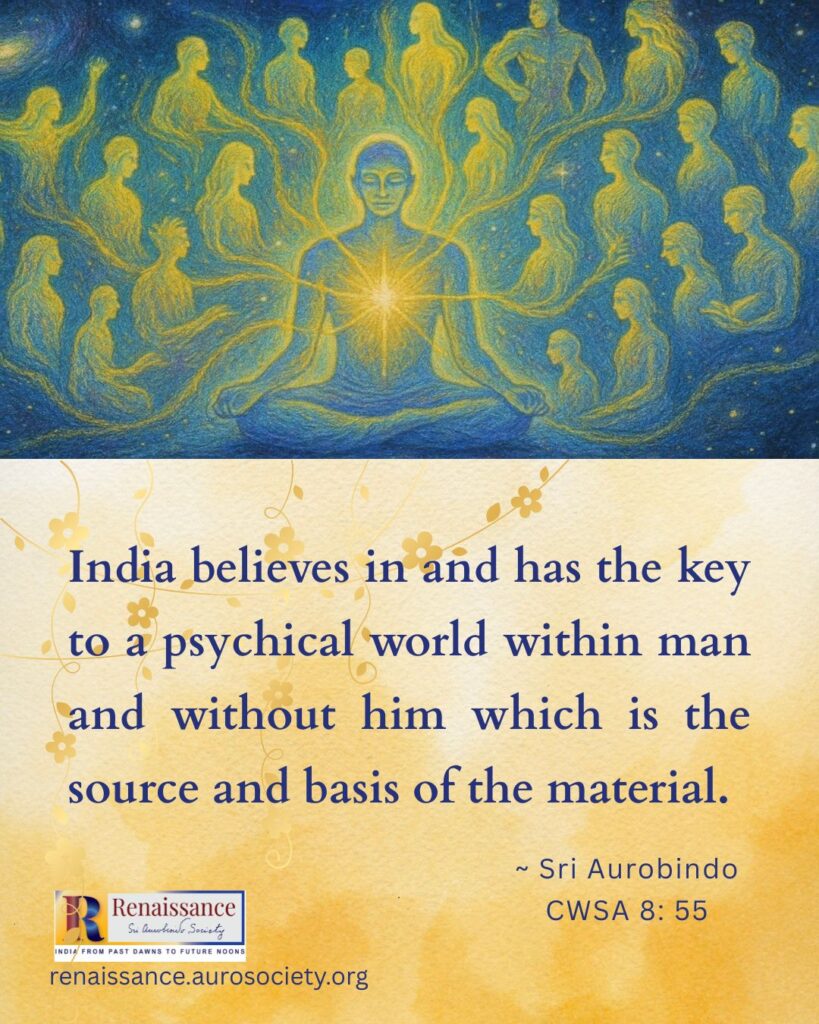Release of Renaissance, Volume VI, Issue 9
Date: September 21, 2025
In Renaissance journal, we continue with our exploration of The New Ideal that Sri Aurobindo has given us, with a special focus on highlighting some perspectives relevant to the evolutionary march of our collective lives as societies and cultures.
This new ideal of integral spirituality is not about other-wordliness or asceticism or excessive religiosity. Rather, in its fullness, it is an all-inclusive orientation to life which takes all human aims and endeavours and gives them a greater and diviner sense. The issue also includes two videos featuring inspiring words from Sri Aurobindo, and also a delightful story inspired by the Vedic-Vedantic wisdom.

“For the most vital issue of the age is whether the future progress of humanity is to be governed by the modern economic and materialistic mind of the West or by a nobler pragmatism guided, uplifted and enlightened by spiritual culture and knowledge”.~ Sri Aurobindo, CWSA, 13: 137
Offerings in September 2025 issue
Starting with the September 2025 issue, we shall feature insights and perspectives that will help us elaborate on the “spiritual solution” as the only solution for the varied challenges we face today in the world. Whether it is educational crisis, cultural decadence, ecological problems, social stratification, economic concerns or others, we shall look for the deeper insight and penetrating light through which to examine both the challenge and the possible solution.
On September 5, we released a special video produced for the occasion of Teachers’ Day. It featured Sri Aurobindo’s call for each one of us to offer all our works, our capacities, at the feet of Mother India who is an expression of the Divine Shakti that animates all, that is the Source of All. Today we present 8 new offerings in this month’s issue.
We open with important selections from Sri Aurobindo’s essay titled ‘The Renaissance in India‘. Here he speaks of a true understanding of the rebirth of the soul of India that is “governed by the principle of spirituality”. This new ideal of integral spirituality is not about other-wordliness or asceticism or excessive religiosity. Rather, in its fullness, it is an all-inclusive orientation to life which takes all human aims and endeavours and gives them a greater and diviner sense.
Read in 2 parts our Guiding Light feature titled, Spiritual Culture and Application of Spirituality to Life.

When we see the world around us, we have often asked ourselves questions such as the following.
- Why is the world the way it is?
- How or when will things get better?
- Everyone says that Truth will one day win, but I don’t see that happening anywhere when I look around?
- Why is Divine not concerned about justice?
We feature, in 2 parts, an illuminating conversation of the Mother dated 8 January 1951. It brings to light some critical points upon which we must deeply contemplate. For example, why we must motivate the children to cultivate an abiding faith in “the certitude of Truth’s final victory”, despite all the outer circumstances.
The Mother gives a profound explanation of the nature of equilibrium on which the world is founded. She explains how this concept may be simply explained to a young child. She emphasises that from their infancy children must be taught that there is an inner reality. And that this inner reality is within themselves, within the earth, within the universe.
Sri Aurobindo’s vision for a new India necessitates a real grounding in the innate civilisational genius that made the ancient India abundantly rich in all spheres – spiritual, intellectual and material. The Veda is the spiritual and psychological seed of Indian culture. The Upanishads are the expression of the truth of highest spiritual knowledge and experience that has always been the supreme idea of Indian culture and the ultimate objective to which it directed the life of the individual and the aspiration of the soul of the people.
Sri Aurobindo speaks of the Upanishads as the supreme work of the Indian mind, the highest self-expression of its genius, its sublimest poetry, its greatest creation of the thought and word. But what made the age of Upanishads possible? Watch a video featuring Sri Aurobindo’s awe-inspiring response to this question. The featured passage is excerpted from one of his essays on Indian Literature.
